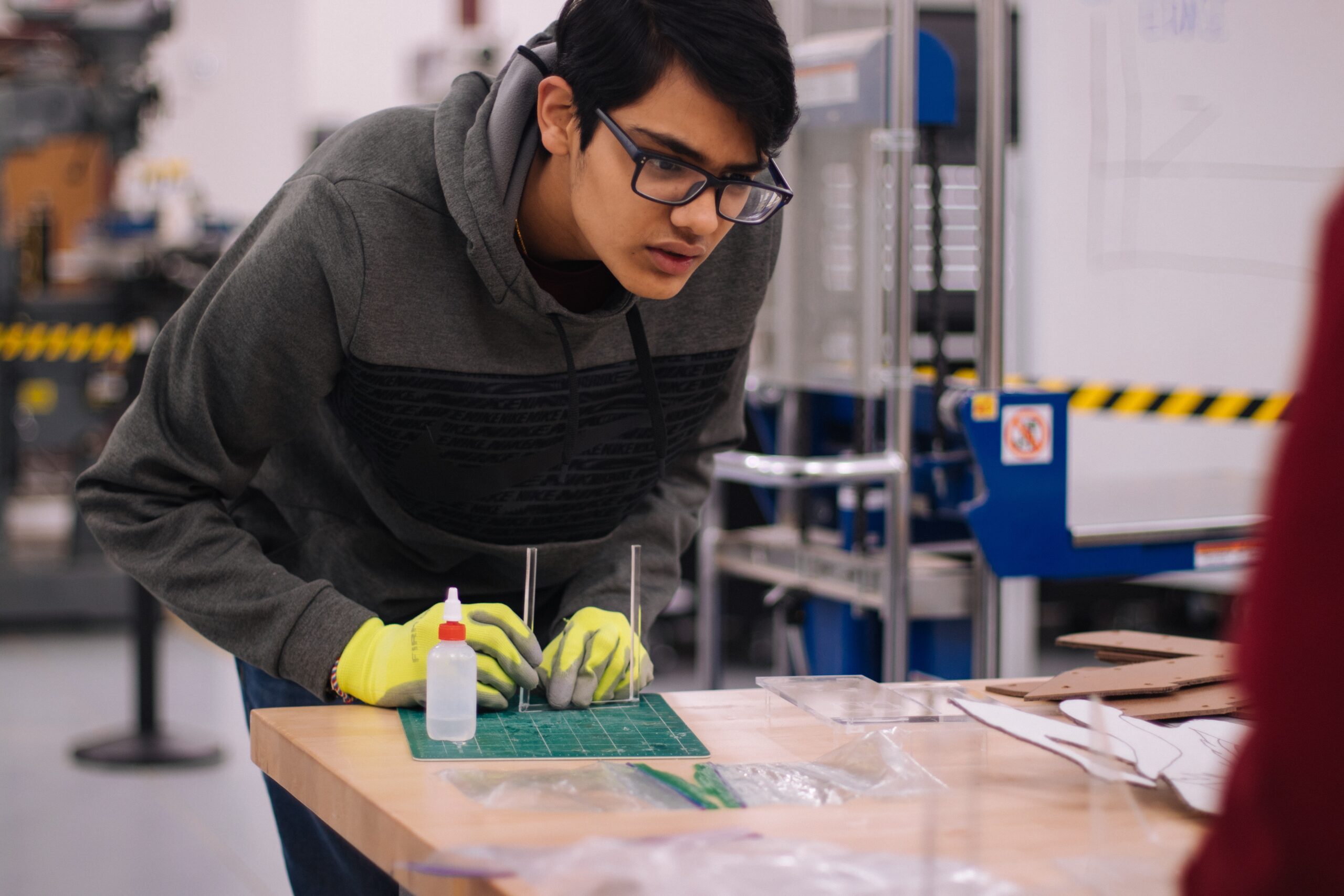
Greatest Increase Is in Technology and Engineering Learning for Older Students
WASHINGTON, DC — Afterschool programs are helping address both the shortage of U.S. workers who are well-trained in STEM (science, technology, engineering and math) fields and the underrepresentation of people of color and women in STEM professions. A study released today finds that afterschool programs have been ramping up their STEM offerings, with 73% of parents reporting that their child’s afterschool program offers STEM learning opportunities, up from 69% in 2014.
Three in five parents of afterschool students (60%) report that their child participates in STEM in afterschool twice or more per week, up from 52% in 2014. Learning opportunities in each of the STEM disciplines – science learning, technology/engineering, and math – are more available in afterschool programs today than they were in 2014. Two in five parents (41%) report that their child’s afterschool program offers computer science opportunities – a question asked for the first time in this survey.

Those are among the findings from STEM Learning in Afterschool on the Rise, But Barriers and Inequities Exist, a new report that identifies trends, measures progress and determines which students are and are not benefiting from STEM in afterschool. It is based on a household survey conducted by Edge Research for the Afterschool Alliance. It finds that 5,740,836 students across the country are getting opportunities to learn STEM in their afterschool programs. Nearly 2 million U.S. children (1,904,846) participated in summer STEM camps in 2019.

But while afterschool programs are reaching populations underrepresented in STEM fields, including Black and Latinx students, students from low-income families are much less likely to be getting technology/engineering and computer science in afterschool than students from higher-income families. That may be, in part, due to cost; parents nationwide report the mean cost of programs offering STEM learning is $107 per week, compared to $74 per week for programs that do not offer it.
“More and more, afterschool programs are providing the STEM learning opportunities that students need to succeed in school and in life,” said Afterschool Alliance Executive Director Jodi Grant. “Thanks to the hands-on, team- and project-based learning these programs provide, they have become a cornerstone of STEM learning for children and youth from all backgrounds. But the inequities are troubling and must not continue. We need to increase access to afterschool overall, because even though parents report a greater percentage of programs are providing STEM, fewer children are in afterschool programs today than in years past. In our country today, for every child in an afterschool program, three more are waiting to get in. We can and must reverse that trend by building and strengthening partnerships and by investing more resources so that all students, no matter their family income, gender, or race, can access STEM in afterschool. That should be a high priority for the country.”

STEM Learning in Afterschool is based on survey responses from more than 31,000 U.S. families. It includes national-level findings from smaller surveys of parents and program providers conducted in summer and fall of 2020 and spring of 2021. Among the key findings:
- STEM learning opportunities in afterschool are on the rise. Parents in 36 states report an increase in STEM offerings in afterschool programs since this study was last conducted in 2014. North Dakota had the largest growth, from 32% to 71%, followed by New Mexico, from 37% to 64%, and Mississippi, from 41% to 69%. Among the STEM disciplines, the greatest jump is in technology/engineering activities, which were offered by 30% of afterschool programs in 2014 and 39% today. This increase is even more pronounced for high school students, with 46% of parents of students in grades 9 – 12 now reporting that their child’s afterschool program offers technology/engineering, up from 32% in 2014.
- Afterschool programs are providing STEM learning opportunities to populations underrepresented in STEM fields. More parents of Black (77%) and Latinx (77%) students report that their child’s afterschool program offers STEM than White (72%) and Asian American (68%) parents. Parents of color are more likely than White parents to prioritize STEM and computer science in selecting an afterschool program, with 79% of Latinx and Asian American parents, 75% of Black parents, and 68% of White parents with a student in afterschool reporting it was important in their selection of a program.
- But opportunities are not the same for all families. More than three in five children in families with higher incomes (62%) participate in a STEM activity in their afterschool program twice per week or more, but just 56% of children in families with low incomes do. Just 27% of parents with the lowest incomes report that their child has technology and engineering activities in afterschool, compared to 44% of parents with the highest incomes, for a 17-point gap. For computer science learning, there is a 15-point gap between the lowest- and highest-income families (33% vs. 48%); and for science, a 14-point gap (43% vs. 57%). Parents in urban communities (79%) are more likely to report that their child has STEM learning opportunities in afterschool than suburban (72%) and rural (70%) parents. Children from higher-income households are three times more likely to participate in a summer STEM camp than children from households with lower incomes.
- Afterschool and summer learning programs are providing STEM learning to more boys than girls. Although afterschool STEM opportunities increased for both boys and girls from 2014 to today, opportunities are growing faster for boys. STEM learning opportunities increased from 69% in 2014 to 75% today for boys, while increasing from 69% to 72% for girls. Some 53% of STEM summer camp participants are boys and just 47% are girls.
- Parents value and are satisfied with STEM learning in afterschool. Three in four parents (76%) say that afterschool programs help children gain interest and skills related to STEM. Seventy-two percent of parents prioritize STEM and computer science in selecting an afterschool program – a significant jump from the 53% who did so in 2014. Among parents of afterschool program participants, those with older students and those with low incomes place the most importance on STEM learning in afterschool. Two in three parents of afterschool students (67%) report being satisfied with the STEM learning their child’s afterschool program provides, and 41% are very satisfied.

The report includes a series of recommendations. Among them: increase the computer science and technology and engineering programming available in afterschool; increase partnerships between the larger STEM education community and afterschool programs; improve assessment measures of afterschool STEM learning; expand STEM learning opportunities in afterschool for girls; and increase investments in afterschool and summer programs so that all young people have access to high-quality out-of-school-time experiences that provide engaging STEM learning opportunities.
“We forget that kids spend four to five times as many waking hours outside school as in it over the course of a year – and that was before the pandemic,” said Laura Overdeck, Chair of Overdeck Family Foundation and founder of Bedtime Math, a nonprofit that ignites kids’ curiosity and love of math. “That’s why the lack of high-quality afterschool programming for low-income children has driven such inequity. We need to ensure that every child has access not just to any afterschool program, but to highly engaging, content-rich programming that opens their eyes to the world of STEM. That’s how we empower all kids to join the next generation of innovators.”

This 2021 America After 3PM special report, STEM Learning in Afterschool, is based on research commissioned and funded by Overdeck Family Foundation. Data from this special report is based on the 2020 America After 3PM survey results, which was made possible with support from the New York Life Foundation, Overdeck Family Foundation, The Wallace Foundation, the S.D. Bechtel, Jr. Foundation, Altria Group, and the Walton Family Foundation, as well as the Charles Stewart Mott Foundation.
The full study, America After 3PM, and accompanying data, are available at www.afterschoolalliance.org.
The Afterschool Alliance is a nonprofit public awareness and advocacy organization working to ensure that all children and youth have access to quality afterschool programs. More information is available at www.afterschoolalliance.org.
Findings from Stem Learning in Afterschool are based on America After 3 PM, a nationally representative survey of randomly selected adults who live in the United States and are the parent or guardians of a school-age child who lives in their household. A total of 31,055 households, including 59,983 children, were surveyed in English or Spanish. Data from interviews is weighted on race and income within states and by state population. The overall margin of error for child-level and household-level data is +/- < 1 percent. The survey included at least 200 interviews in every state and the District of Columbia. Data were collected between January 27 and March 17, 2020, by Edge Research.
Contact Information:
Matthew Freeman,matt@prsolutionsdc.com Lisa Lederer 202/421-5825
Tags:
Menafn, IPS, Reportedtimes, Google News, Financial Content, ReleaseLive, PR-Wirein, Extended Distribution, English
Contact Information:
Matthew Freeman,matt@prsolutionsdc.com
Lisa Lederer
202/421-5825
The post New Study: America’s Afterschool Programs Providing More STEM Learning Opportunities, But Students from Low-Income Families Most Likely to Miss Out appeared first on Financial Market Brief.

